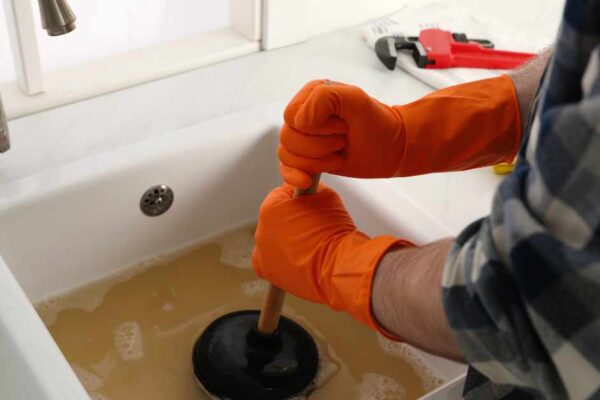Table of Contents
ToggleA Step-by-Step Guide on How to Cut a Hole for a Sink
Materials and Tools
Before you begin, gather the necessary materials and tools
- Sink template
- Measuring tape
- Pencil
- Drill
- Hole saw or jigsaw
- Masking tape
- Safety glasses
- Clamp
- File or sandpaper
Step 1: Measure and Mark
Start by measuring the dimensions of your sink and identifying the precise location where you want to install it on the countertop. Using a sink template, trace the outline of the sink onto the countertop with a pencil. Ensure that the template is centered and aligns properly.
Step 2: Secure the Countertop
To prevent splintering or chipping, secure the countertop with clamps before you start cutting. This will stabilize the surface and provide a cleaner cut.
Step 3: Drill Starter Holes
Use a drill to create starter holes at the inside corners of the traced sink outline. These holes will serve as entry points for the jigsaw or hole saw and help you make more precise cuts.
Step 4: Choose the Right Cutting Tool
Decide whether you will use a hole saw or a jigsaw based on the material of your countertop. Hole saws work well for wood and some softer materials, while jigsaws are suitable for a variety of materials, including laminate and stone.
Step 5: Cut the Hole
Carefully cut along the traced line using the selected tool. Take your time and follow the outline precisely to avoid mistakes. If you’re using a jigsaw, use a slow and steady motion to maintain control.
Step 6: Sand or File the Edges
After cutting the hole, use sandpaper or a file to smooth out any rough edges. This step is crucial for achieving a professional finish and ensuring the sink fits securely into the opening.
Step 7: Install the Sink
With the hole cut and edges smoothed, you can now proceed to install the sink according to the manufacturer’s instructions. Apply a suitable sealant around the edges to prevent water damage and ensure a watertight seal.
FAQs
What tools do I need to cut a hole for a sink?
To cut a hole for a sink, you’ll need a sink template, measuring tape, pencil, drill, hole saw or jigsaw, masking tape, safety glasses, clamp, and file or sandpaper. These tools will help you measure accurately, create a template, secure the countertop, and make precise cuts, ensuring a professional-looking installation.
Can I use a jigsaw or a hole saw to cut the hole for the sink?
The choice between a jigsaw and a hole saw depends on the countertop material. Hole saws are suitable for wood and some softer materials, while jigsaws work well for various materials, including laminate and stone. Choose the tool that aligns with your countertop material to achieve clean and controlled cuts.
How do I prevent chipping or splintering when cutting the hole for the sink?
To prevent chipping or splintering, secure the countertop with clamps before cutting. Additionally, drill starter holes at the inside corners of the traced sink outline to provide entry points for your cutting tool. Taking these precautions helps stabilize the surface and ensures a smoother, more precise cut, especially at the initial cutting stage.
Final Thought
Learning how to cut a hole for a sink is a valuable skill for anyone undertaking a kitchen or bathroom renovation. By following these step-by-step instructions and taking your time with each phase, you can achieve a clean and precise sink installation that enhances the functionality and aesthetics of your space. Remember to prioritize safety by wearing appropriate protective gear throughout the process.







